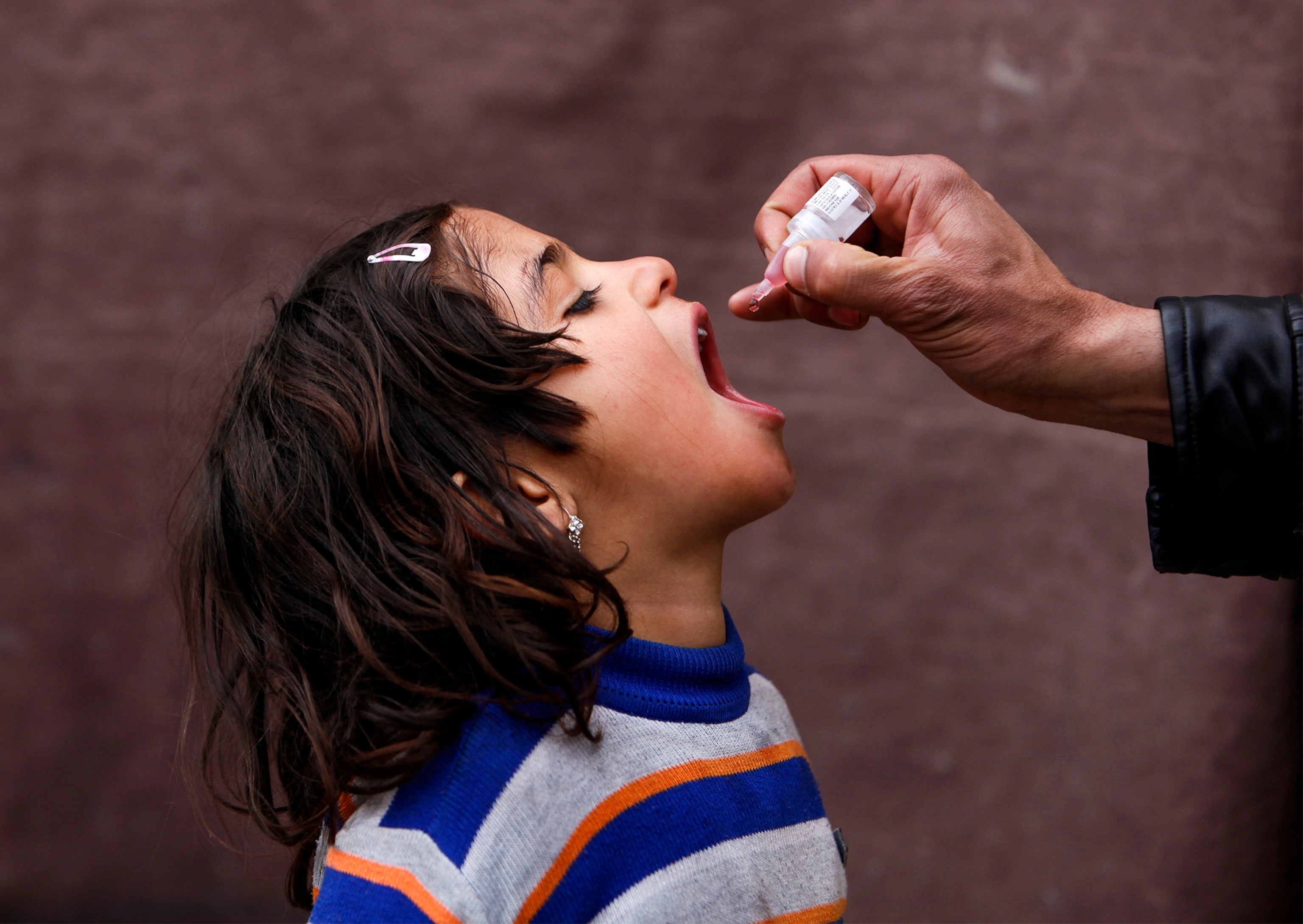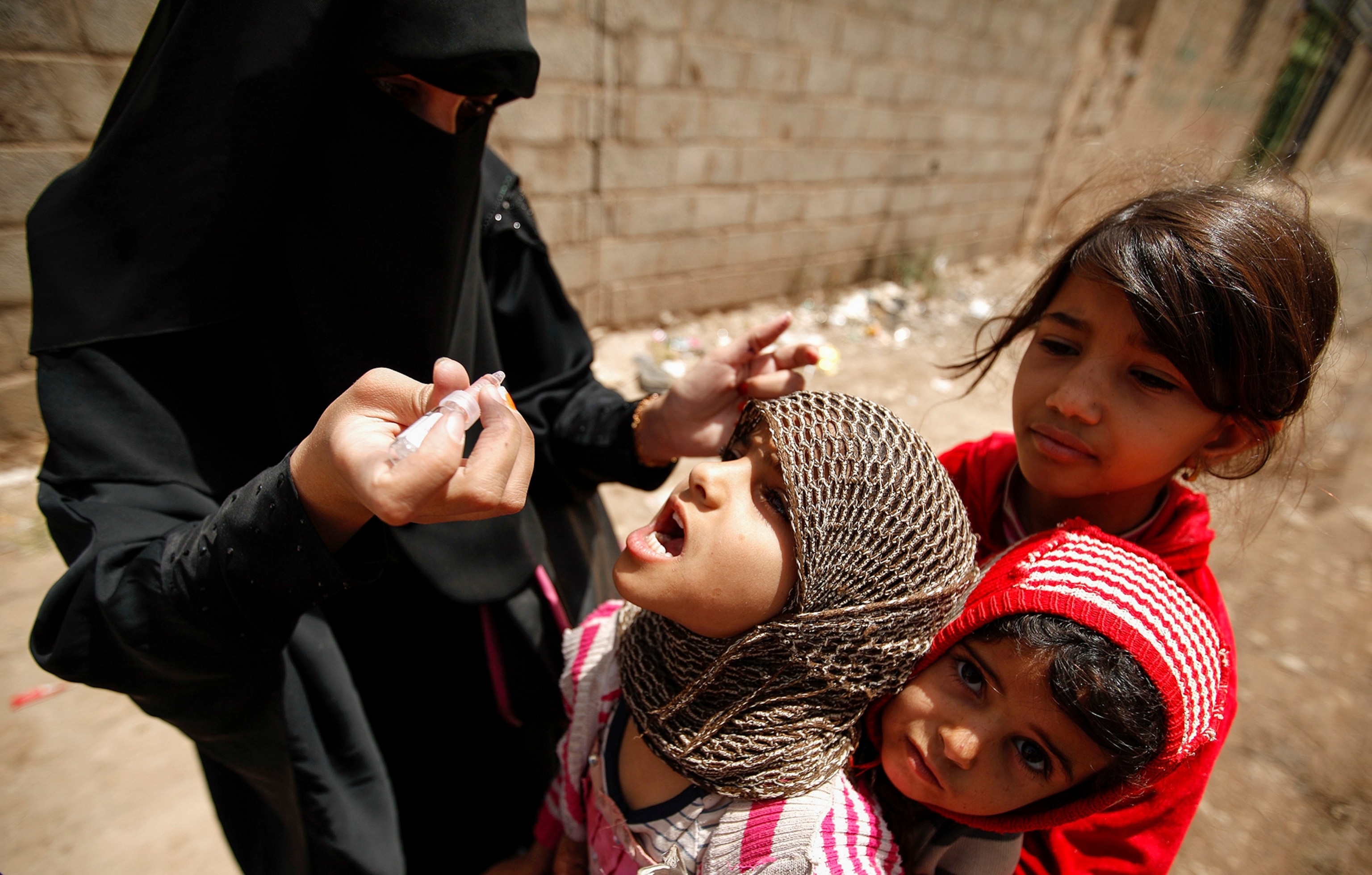
Q&A: Polio's History—and Why It's Again Becoming a Threat
Poverty and war have helped spur cross-border outbreaks.
After more than half a century of increasingly successful efforts to eradicate polio, the paralyzing and sometimes fatal disease is staging a comeback and crossing international borders.
This week, the World Health Organization issued a statement calling the spread of the disease from Pakistan, Syria, and Cameroon an "extraordinary event" and a global public-health threat.
Until now, eradicating polio has been one of the most successful worldwide public-health efforts ever undertaken. In 1955, 28,985 Americans—mostly children—were stricken with polio. Then Jonas Salk developed a vaccine in 1955, which was followed by the Sabin oral vaccine in 1963. There hasn't been a case of polio on the United States since 1979.
Since 1988 more than 2.5 billion children have been immunized worldwide, and the overall number of polio cases has dropped by 99 percent.
To better understand how polio is again becoming a threat—and what should be done about it—National Geographic spoke with Walter A. Orenstein, associate director of the Emory Vaccine Center at the Emory University School of Medicine in Atlanta, Georgia, and former director of the Centers for Disease Control and Prevention's national immunization program.
Ten countries continue to have cases of polio, and Pakistan, Syria, and Cameroon have allowed the virus to spread outside their borders. What can be done to prevent its further spread?
The effort is to break the chains of transmission. The WHO is recommending that countries currently infected with polio ensure that their people who are traveling outside the country get vaccinated. About 72 percent of the people who are infected with the polio virus have no symptoms, but they can still spread the disease. Polio is now in just a few countries. The concern is not to reinfect the countries that have gotten rid of polio.
How does the disease spread?
Several ways. I can have the virus in my saliva and it can spread if I cough or get it on my hands and touch someone. But the most common way the virus is spread is through the stool. If you don't have good hygiene, it's spread through fecal-oral contact.
What can be done to first contain, then wipe out, polio?
Vaccination is the key strategy. In this country, parents can ensure that they get their children vaccinated on schedule. [The CDC has a recommended vaccination schedule.] Our last outbreak occurred in 1979 among the Amish, an unvaccinated population.
What are the barriers to vaccination in the developing world?
Poverty, unrest, and war are major obstacles. The biggest concern, particularly with war, is not being able to vaccinate the children. There are efforts to gain political support to get medical help into these insecure areas. There are also efforts to set up posts and vaccinate people when they leave these insecure areas. We know that the vaccine works.

Does the vaccine really work for a lifetime?
Polio vaccination appears to protect against paralytic disease for a lifetime. The problem is that intestinal immunity may wane. That's why the WHO recommendations are that people traveling out of those areas that still have polio get a dose of vaccine at least four weeks before they travel, and no more than a year before, to maximize intestinal immunity.
Could polio make a comeback in the developed world, including the United States?
It certainly could. There are a limited number of reservoir countries. If we can get rid of polio there, it's a win-win proposition. For them, they don't suffer the effects of polio. For us, no longer do we risk exposure and reemergence. The important thing is for all of us to help all countries interrupt transmission. It's a service to their population and a service to our own. When it comes to eradication, 99 percent reduction isn't good enough. It has to be 100 percent. And it's doable.





